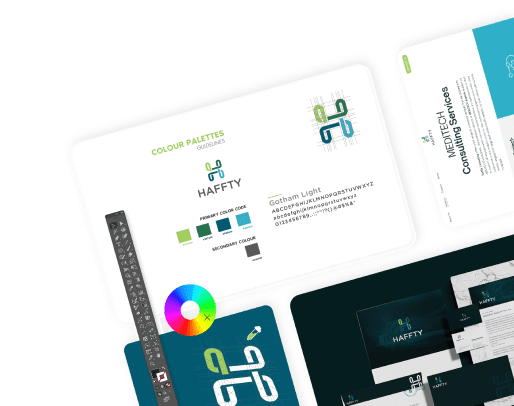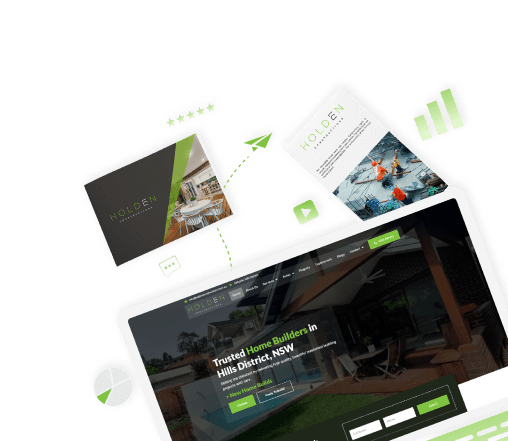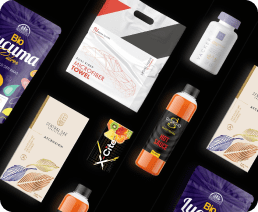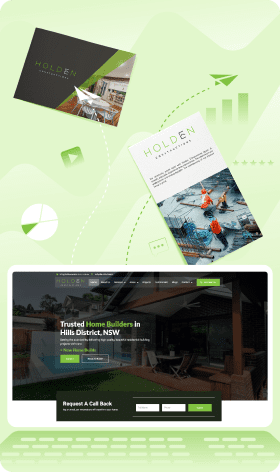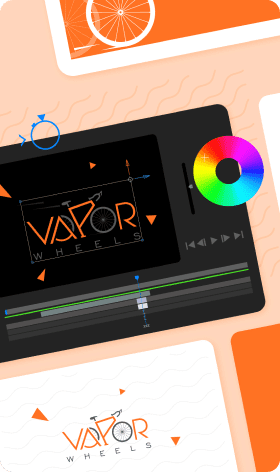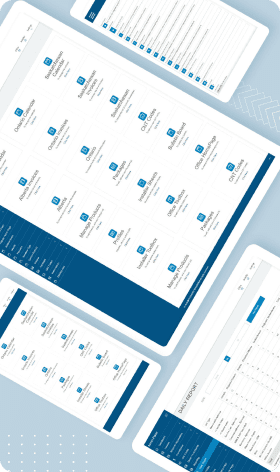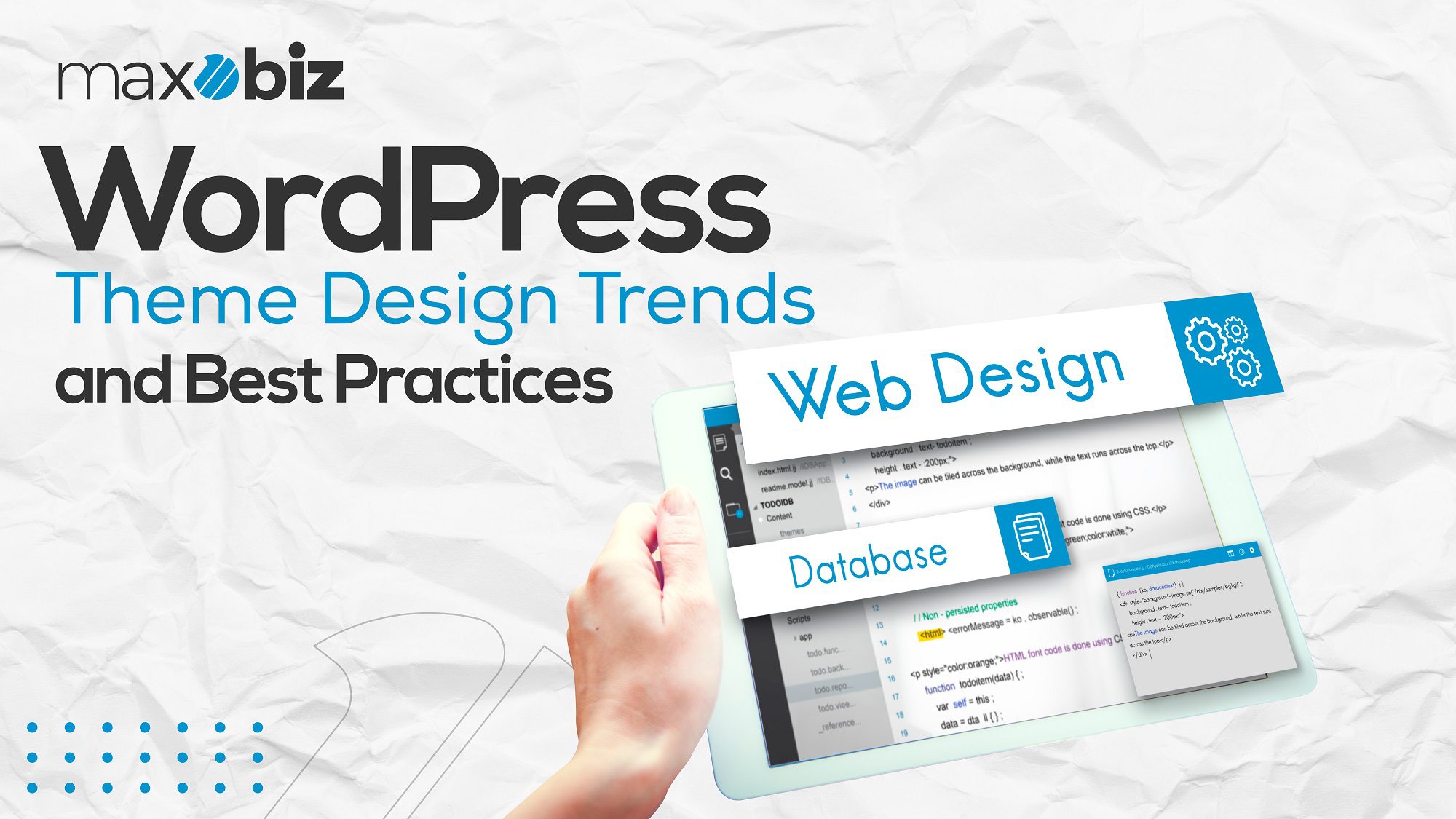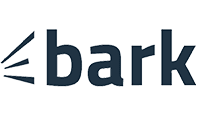In today’s digital landscape, WordPress theme design trends are constantly evolving to meet the changing needs and preferences of website owners and users alike. Keeping up with these trends is crucial for creating visually appealing and engaging websites. Some popular theme design trends include:
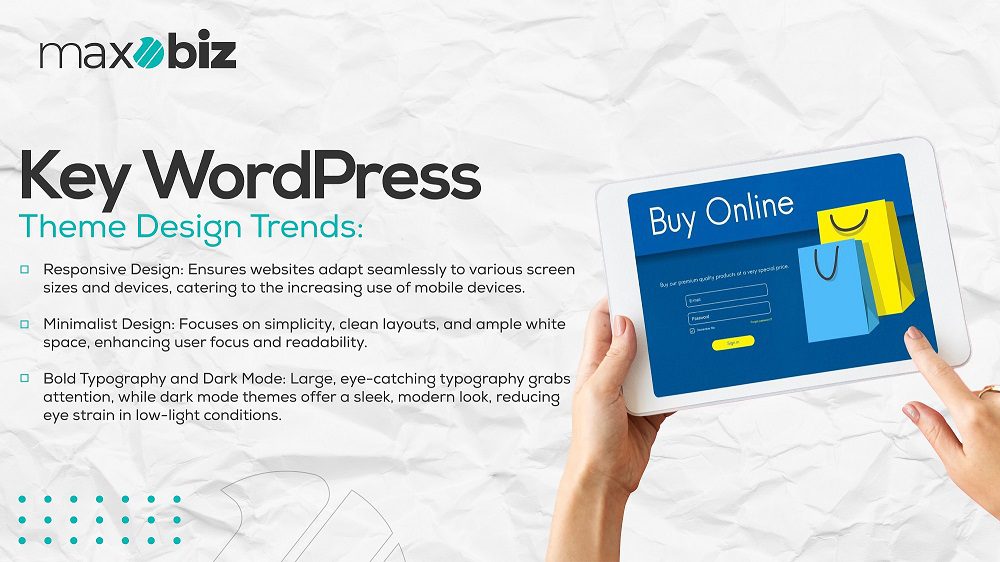
Responsive Design: With the increasing use of mobile devices, responsive design ensures that websites adapt and display seamlessly across various screen sizes and devices.
Minimalist Design: Minimalism focuses on simplicity, clean layouts, and ample white space to enhance user focus and readability.
Bold Typography: Large, eye-catching typography is a trend that helps to grab user’s attention and convey important messages effectively.
Dark Mode: Dark mode themes offer a sleek and modern aesthetic while reducing eye strain and improving readability, especially in low-light conditions.
User Experience in Theme Design:
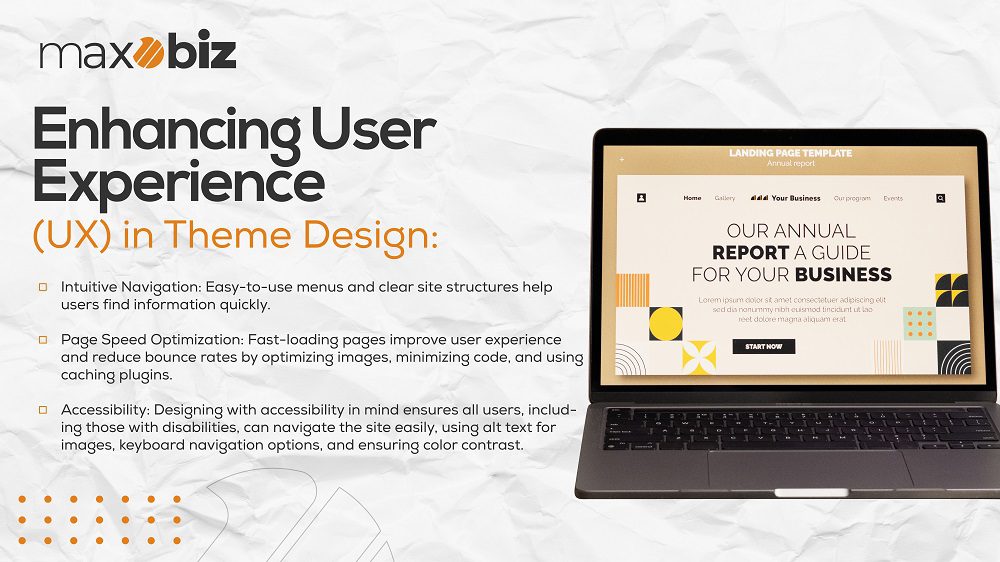
User experience (UX) plays a vital role in WordPress theme design. A good UX design focuses on creating intuitive navigation, clear layouts, and engaging interactions to ensure that visitors have a positive and memorable experience on the website. Key considerations for enhancing UX in theme design include:
Intuitive Navigation: Easy-to-use navigation menus and clear site structure help users find the information they need quickly and efficiently.
Page Speed Optimization: Fast-loading pages improve user experience and reduce bounce rates. Optimizing images, minimizing code, and using caching plugins are essential for enhancing page speed.
Accessibility: Designing themes with accessibility in mind ensures that all users, including those with disabilities, can access and navigate the website easily. This includes using alt text for images, providing keyboard navigation options, and ensuring color contrast for readability.
Also Read This Blog: Custom WordPress Theme Development vs. Pre-built Themes
Color Schemes in Theme Design:
Color plays a significant role in WordPress theme design as it sets the tone and mood of the website. Choosing the right color scheme can evoke emotions, convey brand identity, and enhance visual appeal. Some best practices for using color schemes in theme design include:
Consistency: Stick to a consistent color palette throughout the website to maintain visual harmony and reinforce brand identity.
Contrast: Use contrasting colors for text and background to ensure readability and accessibility for all users.
Branding: Incorporate brand colors strategically to reinforce brand recognition and create a cohesive brand experience.
Accessibility: Consider color blindness and visual impairments when selecting color combinations to ensure that all users can perceive content easily.
Best Practices for Theme Design:
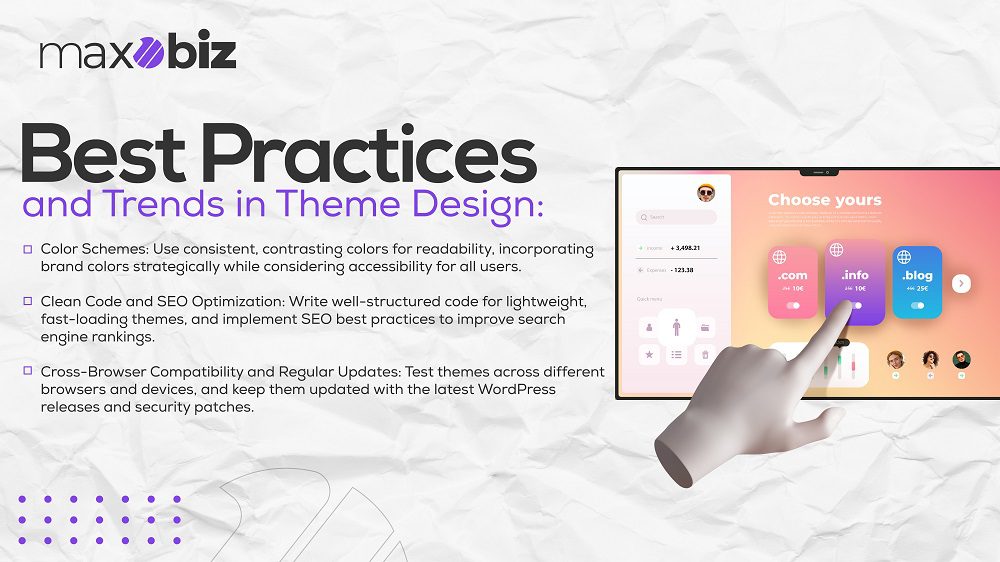
To create effective WordPress themes, it’s essential to follow best practices that prioritize usability, performance, and accessibility. Some key best practices for theme design include:
Clean Code: Write well-structured, semantic HTML, CSS, and JavaScript code to ensure the theme is lightweight, fast-loading, and easy to maintain.
SEO Optimization: Implement SEO best practices such as using descriptive headings, optimizing meta tags, and creating SEO-friendly URLs to improve search engine rankings and visibility.
Cross-Browser Compatibility: Test the theme across different web browsers and devices to ensure consistent performance and appearance for all users.
Regular Updates: Keep the theme updated with the latest WordPress releases, security patches, and bug fixes to ensure compatibility and security.
Minimalist Design Trends:
Minimalist design continues to be a popular trend in WordPress theme design, focusing on simplicity, clarity, and functionality. Some minimalist design trends include:
Clean Layouts: Minimalist themes feature clutter-free layouts with ample white space to enhance visual clarity and readability.
Simplified Navigation: Minimalist designs often use minimalist navigation menus and navigation elements to streamline the user experience and reduce distractions.
Flat Design: Flat design emphasizes simplicity and uses minimal embellishments, gradients, or shadows to create a clean and modern aesthetic.
Whitespace: Whitespace, or negative space, is a key element of minimalist design, helping to create visual breathing room and focus attention on essential content.
In conclusion: Staying updated with WordPress theme design trends and implementing best practices is essential for creating visually appealing, user-friendly, and high-performing websites that deliver a seamless user experience. Whether following minimalist design trends or incorporating bold typography and dark mode themes, prioritizing user experience and accessibility is paramount in theme design.
Also Read This Blog: Enhancing Your Website with WordPress Theme Integration Services
FAQs:
What are effective methods for customizing a WordPress theme?
Effective methods for customizing a WordPress theme include using the Customize tool and editing theme files.
Which WordPress themes are highly recommended?
Highly recommended WordPress themes include Divi, Astra, and OceanWP.
How can one create a theme in WordPress?
Creating a theme in WordPress involves designing templates, adding styles, and integrating functionality.
What are some best practices for utilizing CSS in WordPress customization?
Best practices for working with WordPress CSS include using child themes, organizing stylesheets efficiently, and utilizing CSS frameworks.






